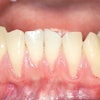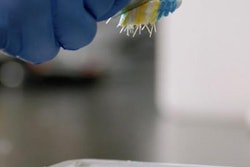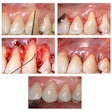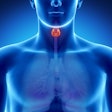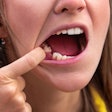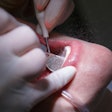
Bleeding gums have long been known as a potential indicator of gingivitis, but they may also be a sign that patients have a vitamin C deficiency, according to a systematic review published on February 1 in Nutrition Reviews.
The World Health Organization's recommended daily dose of vitamin C, also known as ascorbic acid (AA), aims to prevent scurvy but may be too low to stave off increased gingival bleeding, the authors wrote. Dentists may want to consider that patients with bleeding gums have a vitamin C deficiency, especially those who adhere to strict diets, as opposed to recommending that they improve their oral hygiene regimen.
"Gingival bleeding tendency and retinal hemorrhaging coincide with low AA plasma levels and thus may be reflective of a systemic microvascular pathology that is reversible with an increased daily AA intake," wrote the group, led by Dr. Philippe Hujoel of the University of Washington School of Public Health in Seattle.
The link between gum bleeding and vitamin C intake has been recognized for about three decades. Over time, instead of thinking of bleeding gums as a marker for vitamin C levels, clinicians have focused on treating the symptom with toothbrushing and flossing, according to the authors. Missing the possible link between inadequate levels of vitamin C and bleeding gums could lead to serious health complications.
For the current systematic review and meta-analysis, Hujoel and colleagues analyzed 15 clinical trials conducted in six countries, involving 1,140 predominantly healthy participants. They also reviewed data from 8,210 participants in the U.S. National Health and Nutrition Examination Survey (NHANES) III.
Bleeding of the gums on gentle probing was associated with low vitamin C levels in the bloodstream, the group found. Increasing daily intake of vitamin C in those people helped reverse their bleeding issues.
In clinical trials, vitamin C supplementation reduced gingival bleeding tendency when estimated baseline AA plasma levels were less than 28 µmol/L (standardized mean difference, -0.83; 95% confidence interval [CI], -1.16 to -0.49). In NHANES III, the prevalence of gingival bleeding tendency increased when AA plasma levels were within the range that protects against scurvy (11-28 µmol/L), according to the authors.
Limitations of the analysis included a lack of individual participant data, a lack of platinum-standard randomized trials, and the small number of available trials, they noted.
Despite the weaknesses, the findings were robust, they wrote. For example, "every controlled trial conducted in AA-deficient participants showed significant favorable effects resulting from supplementation," they wrote. Leading health organizations that recommend 40 mg to 45 mg daily of ascorbic acid could consider updating their guidelines to prevent microvascular hemorrhaging, they noted.
"A default prescription of oral hygiene and other periodontal interventions to 'treat' microvascular pathologies, even if partially effective in reversing gingival bleeding as suggested in this meta-analysis, is risky because it does not address any potential morbidity and mortality associated with the systemic microvascular-related pathologies," the authors wrote.

